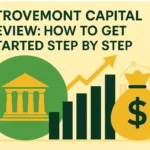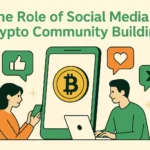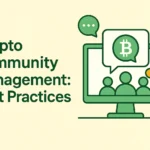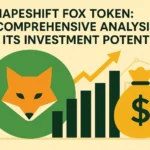In 2025, crypto community management has transformed from a marketing afterthought into perhaps the most critical component of blockchain project success. Having managed communities for various projects since 2018, I’ve witnessed this dramatic evolution firsthand—what once required simple Discord moderation now demands sophisticated multi-platform strategies integrating governance, education, and genuine relationship building.
This comprehensive guide explores how community management in the crypto space has matured, providing actionable strategies that balance technology advancements with fundamental human connection principles. Whether you’re launching a new project, revitalizing an existing community, or working with a marketing agency to scale your efforts, these best practices will help you navigate the complex blockchain ecosystem of 2025.
The Strategic Value of Community in the Crypto Ecosystem
Before diving into tactics, it’s essential to understand why crypto community management has become so strategically valuable:
The Multi-Dimensional Role of Web3 Communities
Modern crypto communities serve several critical functions simultaneously:
| Function | Traditional Business | Crypto Project |
|---|---|---|
| Marketing | Customers promote products | Community promotes protocol |
| Development | Internal teams build | Community contributors develop |
| Governance | Executives decide | Token holders vote |
| Support | Customer service team | Community-led support |
| Market Liquidity | Separate investor base | Community provides trading liquidity |
This convergence of roles creates unprecedented value but also requires sophisticated management approaches that traditional marketing strategy frameworks cannot fully address.
The Economic Impact of Effective Community Management
Analysis of successful projects from 2023-2025 reveals striking correlations:
- Projects with robust community engagement metrics experienced 120% greater token resilience during market downturns
- DAOs with over 30% governance participation demonstrated 3.7x development velocity compared to those with under 5% participation
- Projects allocating >20% of budget to community management saw 2.4x ROI compared to those allocating <5%
These statistics highlight how effective crypto community management has become a primary driver of project sustainability and success.
Essential Components of a 2025 Crypto Community Strategy
A comprehensive crypto community management approach in 2025 requires integration of several key elements:
1. Multi-Platform Ecosystem Development
The days of single-platform communities are long gone. Effective community management now requires coordinated presence across multiple channels:
Core Platform Strategy
| Platform | Primary Purpose | Management Focus |
|---|---|---|
| Discord | Daily engagement & support | Structured channels, moderation tools, bot integration |
| In-depth discussion & education | Thread curation, AMAs, technical discussions | |
| Twitter/X | Public communication & recruitment | Thought leadership, announcement amplification |
| Telegram | Global access & accessibility | Regional groups, simplified updates |
| Lens/Farcaster | Web3-native networking | On-chain engagement, creator economy |
Emerging Platform Considerations
- Specialized blockchain discussion platforms (FWB, Aave Lens, etc.)
- Voice-based communities (Clubhouse successors, Discord stages)
- AR/VR spaces for immersive community experiences
For optimal results, these platforms should function as an integrated ecosystem rather than isolated channels, with cross-platform content strategies and consistent community management approaches.
2. Token-Powered Engagement Models
The most innovative projects leverage tokenization to align incentives around participation:
Token-Based Engagement Mechanics
- Contribution Mining: Rewarding valuable community contributions with tokens
- Reputation Systems: On-chain credibility scores that unlock privileges
- Retroactive Funding: Community-allocated rewards for valuable past work
- Curation Markets: Token-weighted content promotion systems
Implementation Considerations
- Balance intrinsic and extrinsic motivation drivers
- Design sustainable token economic models
- Create clear pathways from casual participation to core contribution
These token-powered systems transform community management from control-oriented moderation to incentive-aligned coordination.
3. Content Creation Strategy for Web3 Communities
Content remains the lifeblood of community engagement, but effective content creation has evolved significantly:
High-Impact Content Types for 2025
- Technical Explainers: Breaking down complex blockchain technology into digestible formats
- Governance Summaries: Making proposal discussions accessible to average members
- Development Updates: Translating technical progress into user benefits
- Ecosystem Mapping: Visualizing how projects interconnect within the broader landscape
- Tokenomics Education: Helping members understand economic mechanisms
Content Distribution Matrix
For optimal engagement, content should be adapted across platforms:
| Content Type | Discord | Telegram | ||
|---|---|---|---|---|
| Technical Deep Dives | Dedicated channel | Long-form posts | Thread format | Summary + link |
| Quick Updates | Announcement channel | Brief posts | Single tweets | Direct messages |
| Visual Explainers | Embedded media | Image posts | Carousel posts | Stickers/media |
| Community Spotlights | Feature channels | Community awards | Retweets | Pinned messages |
Sophisticated crypto community management requires content strategies that maintain consistency while optimizing for each platform’s unique characteristics.
4. Community Governance Facilitation
As on-chain governance has matured, facilitating effective community decision-making has become a core management function:
Governance Best Practices
- Proposal Development Process: Structured pathways from ideas to formal proposals
- Deliberation Frameworks: Facilitated discussion protocols for constructive debate
- Voting Education: Helping members understand implications of governance choices
- Implementation Tracking: Transparent monitoring of approved proposal execution
Common Governance Pitfalls to Avoid
- Plutocratic capture by large token holders
- Voter apathy and low participation
- Technical barriers to governance participation
- Inadequate proposal documentation and specification
Effective governance facilitation represents perhaps the most sophisticated aspect of modern crypto community management.
Advanced Crypto Community Management Tactics for 2025
Beyond foundational elements, several advanced tactics have emerged as particularly effective:
1. AI-Enhanced Community Moderation
The integration of AI tools into community management workflows has revolutionized moderation capabilities:
AI Application Areas
- Sentiment Analysis: Real-time monitoring of community mood
- Content Moderation: Identifying problematic content before escalation
- Question Routing: Directing queries to appropriate team members
- Onboarding Assistance: Personalized guidance for new members
Implementation Approach
- Deploy AI as enhancement rather than replacement for human moderators
- Ensure transparency about AI usage within the community
- Continuously train models on community-specific conversation patterns
- Create clear escalation paths from AI to human intervention
The most successful communities strike a careful balance between technological efficiency and human connection.
2. Influencer Integration Strategy
While influencer marketing remains valuable, approaches have evolved beyond simple paid promotions:
Effective Influencer Collaboration Models
- Community Advisors: Long-term relationships with aligned thought leaders
- Technical Advocates: Developer influencers who contribute code and review
- Education Partners: Influencers who create genuinely valuable learning resources
- Governance Participants: Influencers who actively engage in protocol governance
Selection Criteria Evolution
The metrics for evaluating potential influencer partnerships have shifted:
| Traditional Metrics | 2025 Priority Metrics |
|---|---|
| Follower count | Community overlap |
| Engagement rate | Technical credibility |
| Cost per post | Long-term alignment |
| Reach | Governance participation |
This evolution represents a shift from transactional influencer marketing to genuine community integration.
3. IRL-Digital Integration
Despite the digital nature of blockchain communities, physical gatherings have become increasingly crucial:
Effective IRL Event Types
- Regional Community Hubs: Permanent spaces for local community gathering
- Governance Summits: In-person deliberation on major protocol decisions
- Builder Weekends: Focused development sprints with community contributors
- Education Bootcamps: Intensive learning experiences for community upskilling
Digital-Physical Integration Tactics
- Live streaming of physical events with remote participation
- Digital twin environments for hybrid experiences
- Token-gated access to physical spaces and events
- Physical credentials tied to digital identity
The most vibrant communities create seamless experiences that blend online and offline engagement.
4. Data-Driven Community Management
Sophisticated analytics now inform every aspect of crypto community management:
Essential Community Metrics
- Engagement Depth: Beyond simple message counts to meaningful interaction
- Value Creation: Measuring tangible community contributions
- Retention Cohorts: Analyzing member longevity patterns
- Path to Contribution: Tracking journey from new member to active contributor
Analytics Implementation
- Integrate cross-platform data into unified dashboards
- Establish clear KPIs tied to project objectives
- Develop predictive models for community health
- Use data to personalize member experiences
This analytical approach transforms community management from intuition-based to evidence-driven practice.
Building Your Crypto Community Management Team
The human element remains central to successful community management despite technological advances:
Essential Roles in a Complete Team
Core Team Structure
- Community Lead: Strategic oversight and vision alignment
- Platform Managers: Specialized expertise for each key platform
- Content Creators: Dedicated resources for ongoing content production
- Technical Community Specialists: Bridge between developers and community
- Data Analyst: Metrics tracking and insight generation
- Governance Facilitators: Specialists in proposal development and voting processes
Extended Team Considerations
- Ambassador Program Manager: Coordinating community-led representation
- Local Community Leads: Regional representation for global projects
- Translation Teams: Ensuring linguistic accessibility
- Development Advocates: Technical resources dedicated to community ideas
In-House vs. Marketing Agency Considerations
The decision between internal teams and external marketing agency support should consider:
| Factor | In-House Advantage | Agency Advantage |
|---|---|---|
| Cost Structure | Lower long-term cost | Predictable fixed cost |
| Speed of Deployment | Slower ramp-up | Immediate expertise |
| Platform Expertise | Deep but narrow | Broad experience |
| Cultural Alignment | Naturally integrated | Requires cultivation |
| Scalability | Limited by hiring | Flexible resource allocation |
Many successful projects adopt hybrid models, with core functions in-house and specialized capabilities from agency partners.
Crisis Management in Crypto Communities
Given the volatile nature of the crypto ecosystem, effective crisis response has become a critical management capability:
Common Crisis Scenarios and Response Frameworks
| Crisis Type | First Response | Communication Approach | Recovery Strategy |
|---|---|---|---|
| Security Incident | Acknowledge + technical response | Transparent technical updates | Security improvement roadmap |
| Market Crash | Calm reassurance | Focus on fundamentals | Development milestone emphasis |
| Governance Dispute | Structured discussion | Neutral facilitation | Process improvement |
| Competitor Challenge | Factual differentiation | Emphasize unique value | Accelerate roadmap on differentiators |
Crisis Preparation Best Practices
- Develop scenario-specific response playbooks
- Establish clear crisis communication channels
- Create pre-approved statement templates
- Identify technical response resources in advance
- Train team on crisis protocols
The most resilient communities prepare for crises before they occur, enabling rapid and effective response when needed.
The Future of Crypto Community Management: 2026 and Beyond
Looking ahead, several emerging trends will likely shape the next evolution of crypto community management:
Emerging Trends to Watch
- Credential-Based Communities: Access tied to verifiable credentials rather than token holdings
- AI Community Agents: Personalized AI representatives for members
- Decentralized Content Federation: Cross-platform content distribution via open protocols
- Hyper-Localization: Increasing focus on language and cultural specificity
- Governance Specialization: Professional roles dedicated to specific governance functions
Preparing for Future Evolution
- Invest in adaptable, platform-agnostic community architecture
- Develop robust data portability practices
- Cultivate community participation in protocol evolution
- Balance innovation with consistent core values
The most forward-thinking projects are already laying groundwork for these emerging paradigms.
Conclusion: The Strategic Imperative of Crypto Community Management
As we navigate the complex landscape of Web3 in 2025, effective crypto community management has emerged as the defining factor separating sustainable projects from ephemeral experiments. The communities that thrive in this environment share several critical characteristics:
- Multi-Dimensional Engagement: Integrating discussions across platforms and contexts
- Value-Aligned Incentives: Creating genuine alignment between protocol and participant success
- Governance Sophistication: Facilitating effective collective decision-making
- Technical Accessibility: Bridging complexity gaps between developers and users
- Cultural Coherence: Maintaining consistent values while embracing diversity
For founders, investors, and community builders, recognizing community as the primary moat and value creation mechanism—rather than merely a marketing channel—represents the most important strategic shift in the industry.
The projects that master these dynamics won’t just build better communities; they’ll create more resilient protocols, more innovative products, and ultimately more value for all participants in the ecosystem. In the decentralized future, community isn’t just one aspect of project success—it’s the foundation upon which everything else is built.
FAQ: Crypto Community Management in 2025
Q: What’s the optimal budget allocation for community management in 2025?
A: Most successful projects now allocate 20-30% of operational budgets to community management, with approximately equal distribution between platform management, content creation, events, and incentive programs. This represents a significant increase from the 5-10% typical in 2021-2022.
Q: How do you measure ROI on community management investments?
A: Leading projects track multi-dimensional ROI metrics including: developer recruitment cost savings, marketing amplification value, governance participation impact on decision quality, user retention improvements, and contribution value generated. Together, these typically demonstrate 3-5x return on community investment.
Q: Which social media platforms are most important for crypto communities in 2025?
A: While Discord remains the operational hub for most communities, the distributed ecosystem approach has become standard. Most successful projects maintain active presence across Discord, Twitter/X, Reddit, Telegram, and at least one Web3-native platform (Lens, Farcaster, etc.) with tailored strategies for each social media.
Q: How has the role of community managers evolved since 2023?
A: The role has transformed from primarily moderation-focused to strategic community architecture. Today’s community management professionals require skills in governance facilitation, token economics, technical translation, data analytics, and cross-platform content strategy—a significantly more complex skill set than previously required.
Q: What’s the most common mistake projects make in community management?
A: The most frequent error remains treating community as a marketing channel rather than a core value creation mechanism. Projects that view community primarily through a promotional lens typically underinvest in governance infrastructure, contribution pathways, and genuine value alignment—all critical elements for sustainable community development.

Alex R. Bennett is a cryptocurrency analyst and content strategist with over 7 years of experience in digital assets, DeFi, and blockchain-based investing. After navigating the volatile crypto markets since 2017, Alex launched CoinBuyingTips to help everyday investors make smarter, research-backed decisions.
A strong advocate for transparency and independent research, Alex has written for several industry publications and is known for turning complex tokenomics into clear, actionable insights. When not diving into token whitepapers, Alex hosts webinars and publishes deep-dive reviews that help demystify crypto for the mainstream audience.






